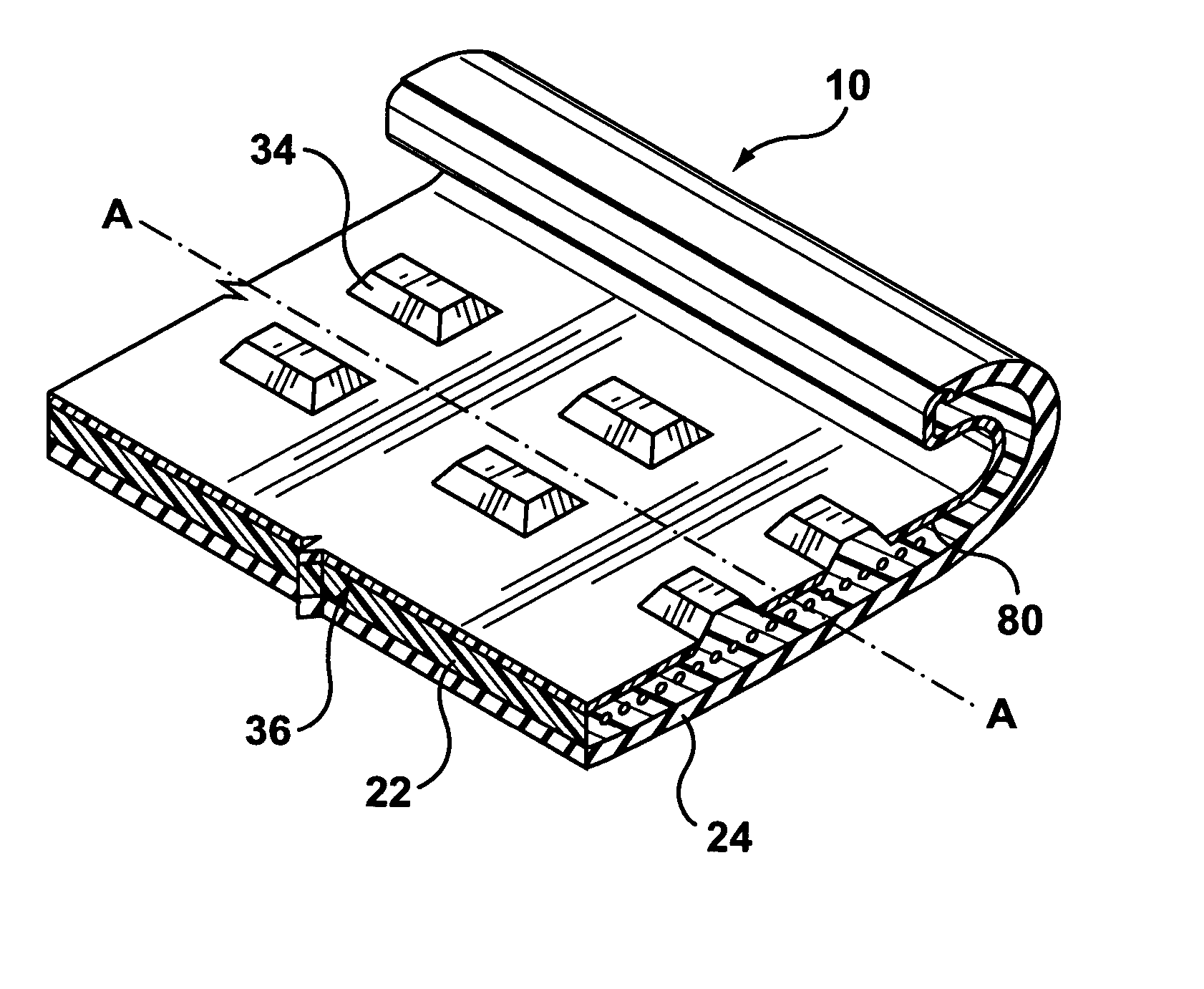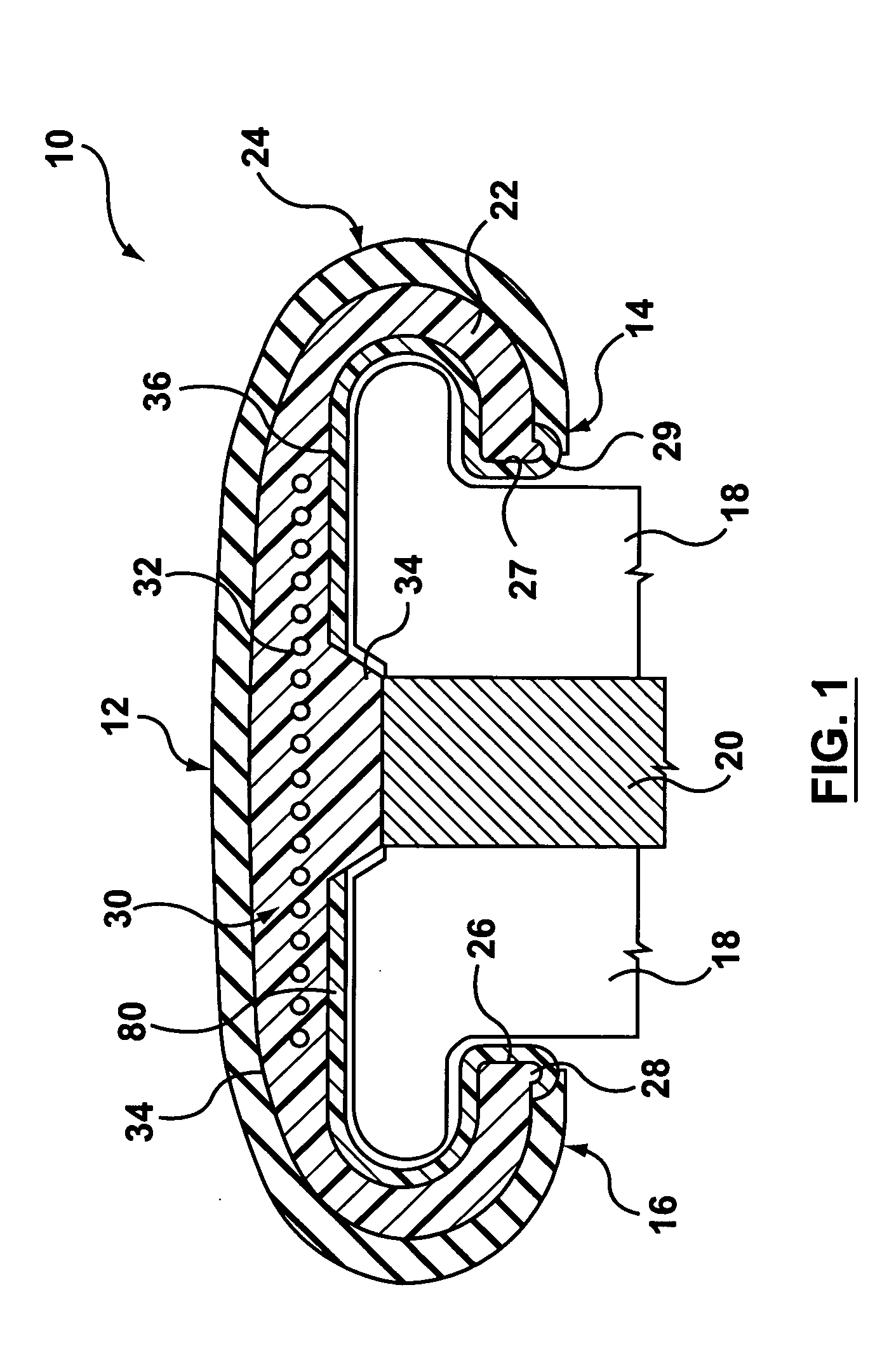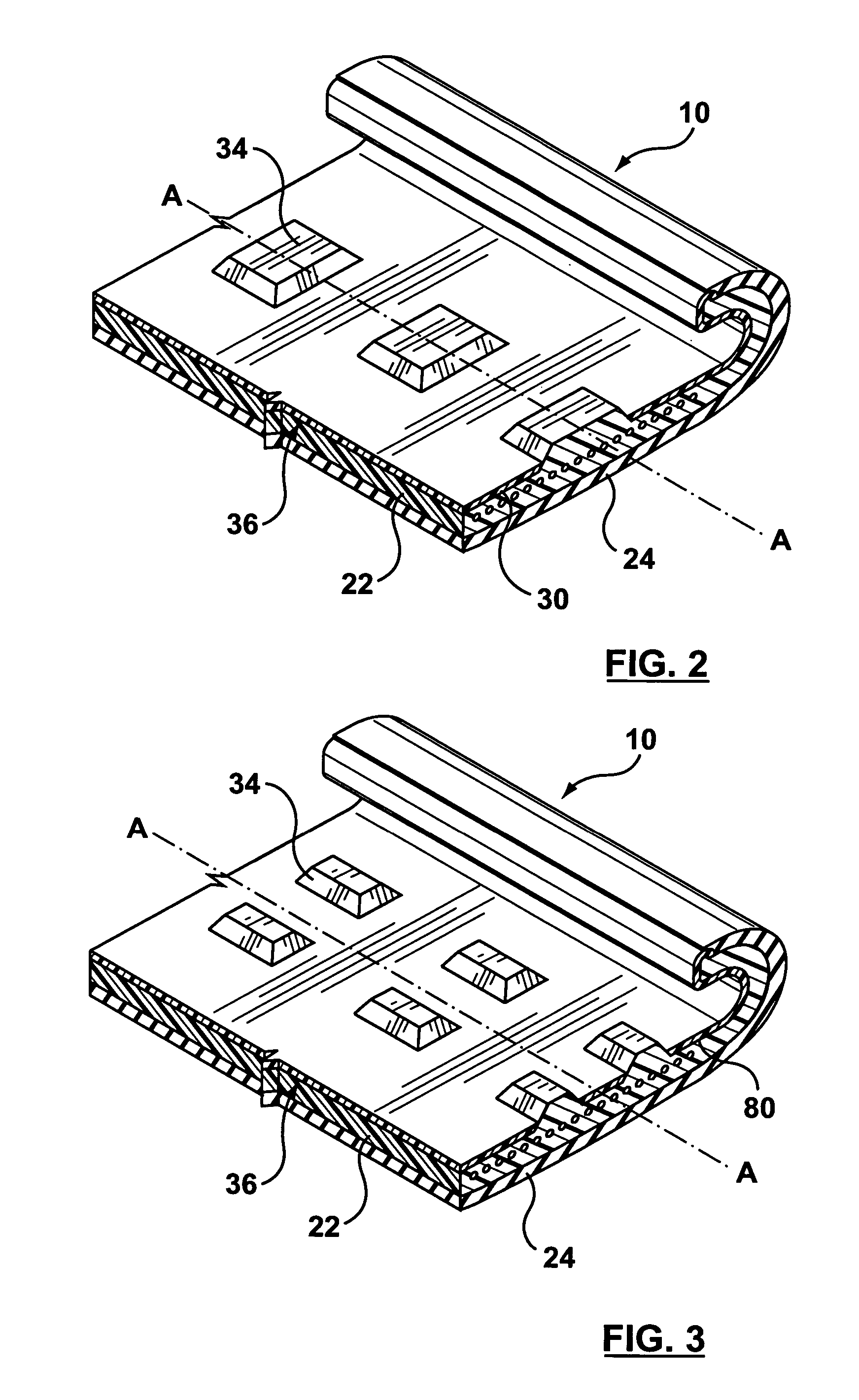Positive drive handrail assembly
a technology of positive drive and handrail, which is applied in the direction of conveying, escalators, transportation and packaging, etc., can solve the problems of handrail slipping or disintegration, the bond between the plies and tensile elements cannot withstand the drive force of a drive mechanism, and the type of laminated structure can be costly to manufacture, so as to improve the durability of handrail and drive, and reduce the amount of stress on the handrail structure.
- Summary
- Abstract
- Description
- Claims
- Application Information
AI Technical Summary
Benefits of technology
Problems solved by technology
Method used
Image
Examples
first embodiment
[0032] Now, in accordance with a first embodiment, of the present invention, the handrail 10 is provided with a plurality of teeth 34 which engage with the drive means 20 to drive the handrail 10. The plurality of teeth 34 extend generally perpendicularly from an inner surface 36 of the inner layer 22. In use in the orientation of FIG. 1, the inner surface forms a bottom surface of the handrail and partially defines a T-shaped slot that forms part of a conventional handrail design. While the teeth 34 shown are trapezoidal in transverse and longitudinal cross-section, it is understood that any tooth cross-section that provides an engaging surface may be used, such as, for example, rectangular, pyramidal, sinusoidal cross-sections or any other geometric solid. Any conventional tooth profile, such as an involute profile, can be used. Referring to FIG. 2, the teeth 34 may be aligned in a row along the longitudinal axis A-A of the handrail 10. Alternatively, the handrail 10 may be provid...
second embodiment
[0037] In this second embodiment, the slider fabric is shown as not extending into the groove 38, i.e. as two strips on either side. However, the slider fabric 80 could extend into the groove 38 at least up to the edge of the teeth 34. It could even cover the teeth 34, to at least some extent.
[0038] The handrail 10 made in accordance with the second embodiment of the present invention may be used to retrofit a conventional escalator. Typically, the guide on a conventional escalator has a generally planar surface that contacts the flat inner surface of the handrail. The teeth 34 are recessed into the inner layer 22 and below the level of the fabric slider surface 80 and are therefore able to slide smoothly along the planar surface of the conventional guide 18. Since the replacement of the original guide is not necessary, the costs associated with the conversion of a conventional escalator to a positive drive system would be limited.
[0039] Alternatively, a conventional handrail may b...
PUM
 Login to View More
Login to View More Abstract
Description
Claims
Application Information
 Login to View More
Login to View More - R&D
- Intellectual Property
- Life Sciences
- Materials
- Tech Scout
- Unparalleled Data Quality
- Higher Quality Content
- 60% Fewer Hallucinations
Browse by: Latest US Patents, China's latest patents, Technical Efficacy Thesaurus, Application Domain, Technology Topic, Popular Technical Reports.
© 2025 PatSnap. All rights reserved.Legal|Privacy policy|Modern Slavery Act Transparency Statement|Sitemap|About US| Contact US: help@patsnap.com



